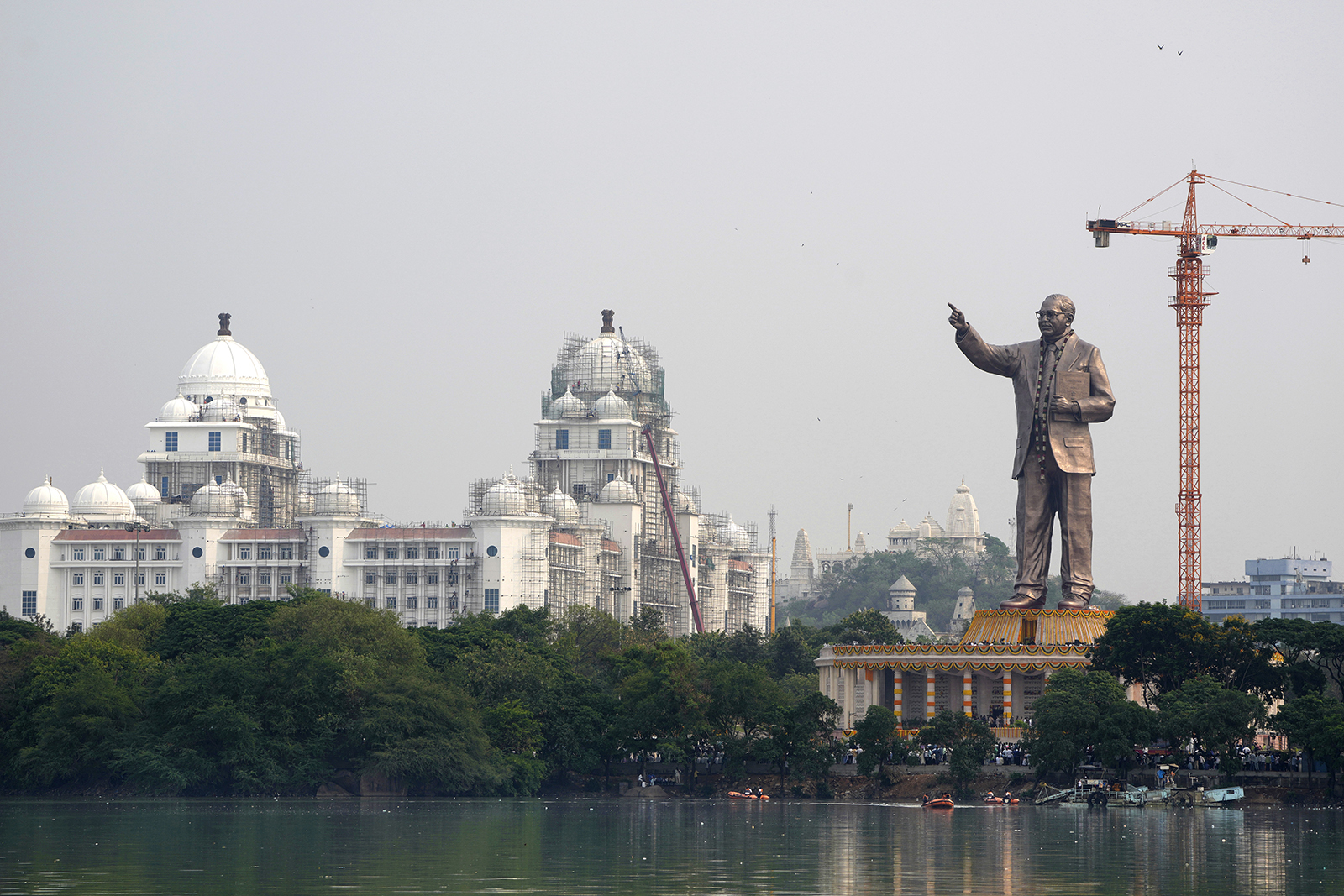07.05.2025.UT News.A collection of SC.ST.Dalit Buddhist Adivasi news of India.chennai.26.By Team Sivaji 9444917060.asivaji1962@gmail.com
Read more at: https://www.deccanherald.com/india/karnataka/dalits-ask-for-a-haircut-barbers-shut-shop-in-koppal-village-3527875
India steps in to stop Sotheby’s auction of sacred Buddhist relics
After legal notice from Union Culture Ministry, the auction house is learned to have assured that it will address concerns over May 7 Hong Kong sale of relics from Piprahwa Stupa
 The Piprahwa Relics include bone fragments, soapstone and crystal caskets, a sandstone coffer, and offerings such as gold ornaments and gemstones. (Source: sothebys.com)
The Piprahwa Relics include bone fragments, soapstone and crystal caskets, a sandstone coffer, and offerings such as gold ornaments and gemstones. (Source: sothebys.com)After being served a legal notice by the Ministry of Culture on Monday evening, international auction house Sothebys has assured the Indian government that it will take adequate measures to prevent the auction of sacred Buddhist relics at its upcoming auction on May 7.
There were calls from various Buddhist organisations to take adequate measures to stop this auction. So, the ministry collected details and wrote to the auction house, an official tells The Indian Express.
It was a listing on Sotheby’s website that caught everyone’s attention to the impending auction.

It said, “Sotheby’s is honoured to present the Piprahwa gems, appearing for the first time in Hong Kong. The 1898 discovery of these gems by William Claxton Peppé at Piprahwa in northern India — where they were found buried together in reliquaries with the corporeal relics of the Historical Buddha — ranks among the most extraordinary archaeological discoveries of all time.”
Even as the listing is still there on the website, officials in the Culture Ministry tell the Express they have been assured of swift action by the auction house.
 The majority of these relics were transferred to the Indian Museum, Kolkata, in 1899. (Source: sothebys.com)
The majority of these relics were transferred to the Indian Museum, Kolkata, in 1899. (Source: sothebys.com)The majority of these relics were transferred to the Indian Museum, Kolkata, in 1899 and are classified as ‘AA’ antiquities under Indian law, prohibiting their removal or sale. A note by Chris Peppe on Sotheby’s website says, “The Piprahwa gem relics were passed down from my great uncle to his son, then in 2013 they came to myself and two cousins. It was at this point that I began in-depth research into the discovery of the gems by William Claxton Peppé, my great-grandfather.”
While a portion of the bone relics was gifted to the King of Siam, a selection retained by Peppé’s descendants has now been listed for auction. Upon learning of the proposed auction, the Ministry of Culture issued a legal notice to Sotheby’s Hong Kong to stop the auction immediately, as per an official. The Ministry of Culture has also served a legal notice to Chris, asking him to withdraw the relics from the auction and return them to India.
 The relics are classified as ‘AA’ antiquities under Indian law. (Source: sothebys.com)
The relics are classified as ‘AA’ antiquities under Indian law. (Source: sothebys.com)The Archaeological Survey of India (ASI) also requested the Consulate General of Hong Kong to take up the matter with authorities demanding the immediate cessation of the auction. During a bilateral meeting on May 2, Culture Minister Gajendra Singh Shekhawat had also raised the issue with Lisa Nandy, Secretary of State for Culture, United Kingdom. The Minister emphasised the cultural and religious significance of the relics and urged immediate action to halt the auction and facilitate their repatriation, officials say.
 The Indian law prohibits the removal or sale of these relics. (Source: sothebys.com)
The Indian law prohibits the removal or sale of these relics. (Source: sothebys.com)On May 5, Culture Secretary Vivek Agarwal convened a high-level review meeting to outline further steps. The Ministry of External Affairs was also requested to engage with embassies in the United Kingdom and Hong Kong to ensure the auction is stopped. The Financial Investigation Unit (FIU) has been asked to coordinate with its counterpart in Hong Kong to highlight the illegality of the auction and ensure compliance with international laws.
As learnt by The Indian Express, Ivy Wong, Ivy Wong, Associate General Counsel Sotheby’s has written to the Ministry of Culture, and assured that full attention will be given to this matter.
Divya A reports on travel, tourism, culture and social issues - not necessarily in that order - for The Indian Express. She's been a journalist for over a decade now, working with Khaleej Times and The Times of India, before settling down at Express. Besides writing/ editing news reports, she indulges her pen to write short stories. As Sanskriti Prabha Dutt Fellow for Excellence in Journalism, she is researching on the lives of the children of sex workers in India.... Read More
Adi Dravida Sangha urges members to participate in survey


(RNS) — Last month marked the 10th Dalit History Month, a worldwide, community-led observance recognizing the people and events throughout history that raised up India’s oppressed minority class, once referred to as untouchables.
During discussions and retreats celebrating Dalit achievements, the top name on many minds was Bhimrao Ramji Ambedkar, known as Babasaheb, or “respected father.” The visionary social reformer and law minister who died in 1956 dedicated his life to abolishing the long-held caste hierarchy in India.
Ambedkar was known for leading movements to assert rights of Dalits, or members of the lowest caste, to public water, education and Hindu temples. Eventually, an affirmative action program was enshrined, and untouchability was eradicated within the Constitution of India. His followers are known as “Ambedkarites.”
Yet the decades Ambedkar spent attempting to reform the Hindu religion, which he saw as inherently structured by caste, ended in one of the largest mass conversions to any religion in history. Following his lead, nearly half a million Dalits in India converted to Buddhism from Hinduism in a single ceremony on Oct. 14, 1956. It was a socio-political statement that rejected Hindu justification for caste division — specifically the varna and jati systems found in some of the earliest Hindu texts that designate one’s occupation and social status by birth.
 Portrait of a young Bhimrao Ramji Ambedkar. (Photo courtesy Wikimedia/Creative Commons)
Portrait of a young Bhimrao Ramji Ambedkar. (Photo courtesy Wikimedia/Creative Commons)“I had the misfortune of being born with the stigma of untouchability,” Ambedkar once said. “But it is not my fault. I will not die a Hindu, for this is in my power. I say to you, abandon Hinduism and adopt any other religion which gives you equality of status and treatment.”
Pointing to Ambedkar’s influence, in the 1961 Indian census, more than 90% of the 3 million people registered under the Mahar caste — Ambedkar’s caste of origin — had converted to Buddhism in Maharashtra, his home state. Today, Maharashtra is home to the largest percentage of Buddhists in India. They are made up mostly of Dalit converts, known sometimes as “neo-Buddhists.”
William Edelglass, a scholar and practitioner of Buddhist thought, said Ambedkar saw Hinduism as a “religion of rules,” as opposed to Buddhism, a “religion of principles.” And rather than abandon religion altogether, Ambedkar saw faith as necessary for “understanding others and setting up the conditions to work together,” Edelglass said.
While he was encouraged by Muslims, Christians, Sikhs and Zoroastrians to join their faiths, Buddhism, with its indigenous roots in ancient India, seemed to Ambedkar the “most suitable contemporary religion” for rational, scientific thinkers like himself, Edelglass said.
“Ambedkar sees the practice of Buddhism as one of training the mind, of education, of finding dignity,” said Edelglass, director of studies at the Barre Center for Buddhist Studies in central Massachusetts. “The concepts of liberty, fraternity and equality — he says he doesn’t get that from the French Revolution, but he gets that from his master, the Buddha, and he sees the Buddha as a very political thinker.”
Importantly, Edelglass said, Dalits who converted to Buddhism have a literacy rate higher than 81%, which is significantly higher than the national average of Hindu Dalits.
“A big part of what Ambedkar wanted was that Buddhism provided a source of a sense of dignity and worth,” Edelglass said.
Buddhism’s influence on Ambedkar is well-documented, including in his famous treatise “The Annihilation of Caste.” Lesser known are his contributions and reforms to the Buddhist faith. His version of Buddhism, Navayāna, or New Vehicle Buddhism, denies the tenets of karma and reincarnation, espouses ritualistic and supernatural aspects of the tradition, reinterprets the concept of suffering from internal to societal and rejects monastic exclusivity, as Ambedkar believed enlightenment was available to all.
Navayāna Buddhism has left a sizable impact on what scholars refer to as Buddhist modernism, or the scientific, mindful tradition often most recognizable to those in the West, Edelglass said. Ambedkar’s emphasis was on solutions to social conflict between groups and individuals.
“That’s the project — to end conflict and marginalization,” Edelglass said. “That’s what Ambedkar Buddhism is about.”
Dharmacharya Ananta, an initiated member of the Triratna Buddhist Community originally from the U.K., said Ambedkar’s social justice lens has helped him see a new approach to Buddhism.
“Dr. Ambedkar is of a lot of interest particularly to Buddhists who are looking for someone who is giving more guidance on social action and how social action can fit with Buddhist spiritual teachings in a way that isn’t simply, ‘Be pacifist. Be non-violent. Be nice to people,'” said Ananta, who is chair of the Triratna sangha in New York and New Jersey. “It’s more complex and more involved than that.”
A longtime activist and volunteer for international human rights causes, Ananta is part of Karuna, an Indian charity organization working to uplift marginalized communities through education and career diversification opportunities, especially for those of lower caste standings who are often relegated to a particular degrading job from birth.
Learning from Ambedkar, Ananta said he understands that liberation through Buddhism includes not only improving one’s social standing, but spiritual transformation and emphasizing individual potential. Raising up a person’s ability to see beyond their circumstances, Ananta said, is as relevant as responding to emergencies and immediate needs.
“It’s not just the very important aspect of improving material conditions, but it’s about what’s going to support people from this community to live with a sense of dignity and help them to reframe their sense of who they are,” Ananta said.
Ananta said he knows through his work that caste is still a lived reality that affects millions of Indians. Though social norms, like inter-caste marriages, and job opportunities have been changing, many Indians, like Dhananjay Chavan, a psychiatrist living in Maharashtra, say there is a long way to go.
“Caste is class in India, and class is caste,” he said. “It is an extremely unequal society, and that has been a bit of a eye-opener for me. And it came much later, and it came because I was extremely interested in the Buddha
Chavan, raised a “cultural Hindu,” he said, switched gears shortly after college. He devoted 20 years to a meditation institute and, inspired by Ambedkar, eventually wrote a rejection of the theory of karma and reincarnation in his 2023 book “The Book of Karma.”
“The theory of karma gave the spiritual sanctity for caste because it says you are born into a lower caste because of some karma of your past,” he said. “Not only is that not a scientific theory, but it also does a disservice to society by giving a religious basis to this system.”
But to D.B. Sagar, a Dalit activist originally from Nepal, Hinduism and Buddhism can coexist — even in the same household, incorporating both Hindu pujas and Buddhist mantras. The “Hindu-Buddhist” who now practices law in the Washington, D.C., area finds peace in both traditions and doesn’t see caste as a religious issue that uniquely stems from Hinduism. Instead, it’s a social stratification that exists wherever there is religion, including within Buddhism across many Asian countries, Sagar said.
In that vein, Sagar argued, Ambedkar’s conversion to Buddhism was a “political instrument because he knew it may not give a solution, particularly, but at that point in time, it was the best strategy to negotiate and to have his agenda (become) stronger.” The founder of the International Commission on Dalit Rights, Sagar said he applauds Ambedkar for his “resiliency, and his tactical, legal and political battle to organize and unite the community.”
In Edelglass’ view, however, Ambedkar devoted enormous amounts of energy in the last decade of his life to studying Buddhism, and a merely political, rather than “spiritual, moral training” wouldn’t have worked. While it’s true Ambedkar “seems to have thoroughly given up on Hinduism,” Edelglass said, “at times, he seemed to be open to the possibility that Hinduism can change and become a religion of justice.”
Sunita Viswanath, executive director of Hindus for Human Rights, a United States advocacy organization, said this vision can still be true.
“Along with hundreds and thousands of his followers, Ambedkar was famously and vocally skeptical of the possibility of anti-caste reform within the Hindu community,” Viswanath said during a Dalit History Month webinar, titled “Can Hindus annihilate caste? Engaging Ambedkar’s critique to envision an anti-caste Hinduism.” The April 26 webinar was a conversation between three scholars of caste and Hindu theology.
“However, in several places, Dr. Ambedkar stated that Hindus who do have the will for anti-caste reform would not have to look beyond the teachings of Vedantic texts such as the Upanishads for the requisite resources,” Viswanath said. “The truth is, caste is not going to be annihilated without masses of Hindus rejecting caste. We are those anti-caste Hindus that Ambedkar was addressing.”
Two booked for defacing Ambedkar statue

Minor among 2 detained for ‘gangrape’ of Dalit teen
“The teenage girl, in her statement before a magistrate, named two persons who allegedly sexually assaulted her,” said a police officer. He added that another minor has also been booked in the case. The two suspects are neighbours of the girl, police said.
THE PRAYAGRAJ police have arrested a 22-year-old man and detained a teenaged minor in connection with the alleged gangrape of a minor Dalit girl.
“The teenage girl, in her statement before a magistrate, named two persons who allegedly sexually assaulted her,” said a police officer. He added that another minor has also been booked in the case. The two suspects are neighbours of the girl, police said.
A case has been registered against seven persons, including two minors and five adults, some among whom are women. Police said the roles of the other accused were being investigated.
According to the police, the girl’s family alleged that she was on her way to the market when she was approached by her friend who took her to a house where the accused were present. There, she was allegedly sexually assaulted. Later that night, she was dropped near her residence by the accused, who then fled.
The girl informed her family upon returning home, and they later approached the police to file a complaint. Her medical examination was done and the report is awaited.
The alleged incident took place on May 2, but an FIR was registered only recently following the intervention of senior police officers.







Comments
Post a Comment